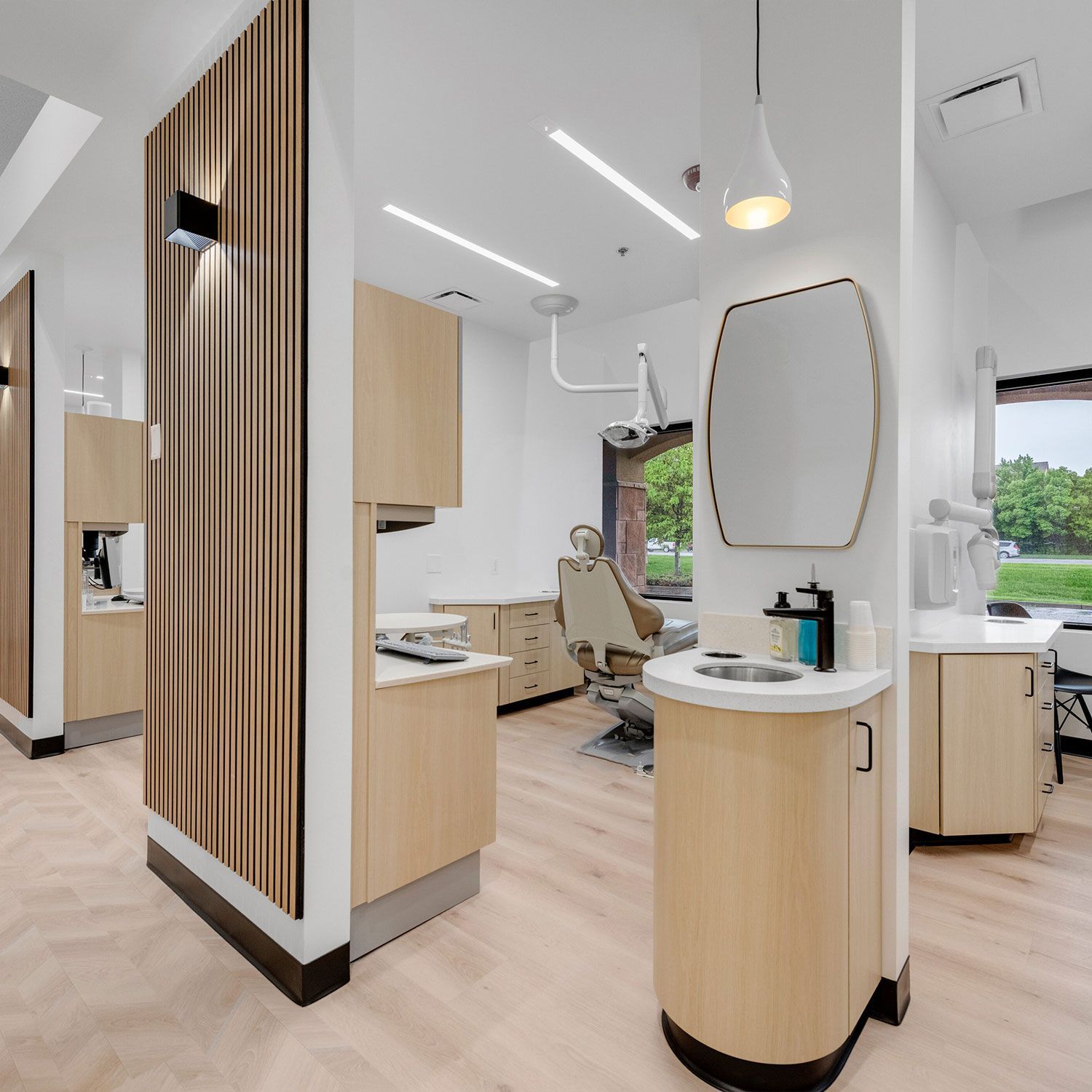Zygomatic Implants at The Smile Suite
What Are Zygomatic Implants?
A zygomatic implant is a type of dental implant used to support a fixed dental prosthesis, such as a bridge or denture, in patients with insufficient jawbone structure in the upper jaw or maxilla to support conventional dental implants.
Zygomatic implants are longer and broader than conventional dental implants and are anchored in the zygomatic bone, a dense, sturdy bone located in the cheek area. This allows for a secure and stable foundation for a fixed dental prosthesis, even in cases where the jawbone has been resorbed or lost due to factors such as periodontal disease, injury, or congenital conditions.
The placement of zygomatic implants is a complex surgical procedure that should only be performed by a trained and experienced dental implant specialist. The procedure typically requires a team approach and involves extensive planning, precise surgical technique, and a high level of attention to detail to ensure successful outcomes.
Overall, zygomatic implants offer a highly effective solution for patients who are unable to receive conventional dental implant placement due to insufficient jawbone structure and provide a fixed, stable, and long-lasting alternative for restoring the upper jaw.

Who Needs Zygomatic Implants?
Zygomatic implants offer many benefits for patients with insufficient jawbone structure in the upper jaw or maxilla who cannot receive conventional dental implants. Some of the key benefits of zygomatic implants include:
- Fixed and stable prosthesis: Zygomatic implants are anchored in the dense and sturdy zygomatic bone, which provides a secure and stable foundation for a fixed dental prosthetic, such as a dental bridge or denture.
- Improved oral health: With a fixed and stable prosthesis, patients can eat and speak comfortably, improving their oral health and quality of life.
- Reduced need for bone grafting: Zygomatic implants can be placed without requiring bone grafting procedures, reducing treatment time, costs, and patient discomfort.
- Improved esthetics: Zygomatic implants can restore the upper jaw and provide a natural-looking smile, which can significantly enhance the esthetics and appearance of the face.
- Long-lasting solution: Zygomatic implants are made from high quality, biocompatible materials designed to endure for many years with proper care and maintenance.
Overall, zygomatic implants can provide a highly effective solution for patients with insufficient jawbone structure in the upper jaw, allowing them to regain a stable and functional bite, improve their oral health, and restore their smile.
What Are the Benefits of Zygomatic Implants?
The procedure typically involves the following steps:
-
1. Planning:
The first step in the placement of zygomatic implants is to plan the procedure carefully, including taking 3D imaging scans to ensure precise placement of the implants.
-
2. Anesthesia:
The patient will be given local anesthesia, intravenous sedation, or general anesthesia, depending on their preferences and the complexity of the procedure.
-
3. Incision and reflection of the soft tissue:
The surgical site will be accessed through an incision in the gums, and the soft tissue will be reflected to expose the zygomatic bone.
-
4. Placement of the implant:
Using a special drill, the implant will be carefully placed into the zygomatic bone, ensuring it is positioned at the proper angle and depth.
-
5. Healing period:
After placement of the implants, the gums will be sutured, and a healing period of several months will be required to allow for proper osseointegration, or the bonding of the implant to the bone.
-
6. Provisional restoration:
After the healing period, a provisional restoration, such as a temporary bridge or denture, may be placed on the implants to allow the patient to eat, speak, and smile comfortably while the permanent restoration is being fabricated.
-
7. Final restoration:
Once the zygomatic implants have fully integrated with the bone, the permanent dental prosthesis, such as a bridge or denture, will be securely attached to the implants, restoring the patient's smile and oral function.
Overall, the placement of zygomatic implants is a complex surgical procedure that requires careful planning, precise surgical technique, and a high level of attention to detail to ensure successful outcomes. Candidates for dental implants should only consider zygomatic implants if they cannot receive conventional dental implants due to insufficient jawbone structure and are referred to a qualified and experienced dental implant specialist.
What to Expect After the Zygomatic Implant Procedure?
After getting endosteal implants, it is essential that you follow your dentist or oral surgeon's treatment plan for aftercare to ensure a successful and smooth healing process. Here are some general tips to follow:
-
1. Swelling and bruising:
It is common for patients to experience swelling and bruising in the surgical area, which can be managed with ice packs and over-the-counter pain medication.
-
2. Pain and discomfort:
Some patients may experience pain and discomfort after the procedure, which can be managed with pain medication prescribed by the dentist.
-
3. Soft diet:
Patients should follow a soft diet for several days after the procedure to allow the surgical site to heal properly and reduce the risk of complications.
-
4. Healing period:
A healing period of several months is required after the placement of zygomatic implants to allow for proper osseointegration, or the bonding of the implant to the bone. Patients should attend regular follow-up appointments with their dentist during this time to monitor the healing process.
-
5. Provisional restoration:
After the healing period, a provisional restoration, such as a temporary bridge or denture, may be placed on the implants to allow the patient to eat, speak, and smile comfortably while the permanent restoration is being fabricated.
-
6. Final restoration:
Once the zygomatic implants have fully integrated with the bone, the permanent dental prosthesis, such as a bridge or denture, will be securely attached to the implants, restoring the patient's smile and oral function.
Overall, patients can expect some discomfort and swelling after the placement of zygomatic implants, but these symptoms typically subside quickly with proper care and management. Patients need to follow their dentist's instructions and attend all follow-up appointments to ensure a successful outcome.
CLIENT REVIEW

I have been looking for an amazing dentist office for sometime and was thrilled to meet Dr. Nicholson. She was kind, personable, very professional and very detail oriented. Having a dentist who truly cares about your dental health and their patients is a breath of fresh air. I am so glad I got to meet Dr. Nicholson and her team.
Michelle Renee

Dr.Nicholson and her staff are the best of the best! Jenna is fabulous with what she does. Very calm modern office makes you feel so comfortable.
Mayra Ramos

Dr. Nicholson's practice is full spectrum. Whether you are needing personalized service or a place for your whole family, The Smile Suite provides a state of the art, pristine and welcoming atmosphere. Jenna keeps pace with the latest dental technology and performs exceptional dental care.
Megan and Jeremy

I have been a patient of Dr Nicholson for several years and she is very skilled. She listens, takes time, and is aware of what's new in dentistry and what is necessary vs not necessary. Her work is exceptional. I have recommended her to friends.
Ginney Hitchon

Our family has been seeing Dr. Nicholson for years. Jenna is fabulous at what she does... She is very caring and puts the patient first. She will listen to all your concerns and help you make the best informed decisions. Dr. Nicholson has the most up to date technology and is very skilled in what she does. Not only is Jenna a truly amazing dentist but The Smile Suite is an absolutely stunning and comfortable place to receive dental care. We trust her with our own dental needs and our children's.
Morgyn Hood

I chose to switch dentists after almost a decade. I was very nervous about my appointment since I had been neglecting to floss for some time. I was immediately put at ease. Dr. Nicholson spent time talking with me and genuinely cared about my concerns. The staff was professional and friendly. The office was comforting and incredibly clean. Dr. Nicholson is quite clearly talented in both dentistry and service.
Devon Torres
QUICK LINKS
Providing beautiful healthy smiles and personalized service
Join our newsletter and find out more 720-679-9689
Contact Us
We will get back to you as soon as possible
Please try again later

| All Rights Reserved | The Smile Suite | Designed by Lingows